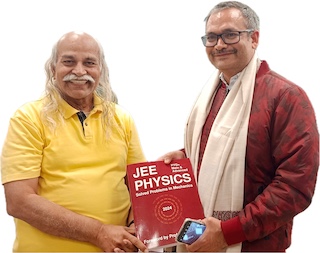Reaction Time | Game of Drop and Catch
Reaction time is the amount of time taken by a person to respond to a stimulus. The average reaction time for an adult is around 250 milliseconds (ms) to 300 ms. However, reaction times can vary depending on a number of factors, including age, gender, physical condition, and the nature of the task. Reaction time can be measured by this simple experiment.
The distance travelled by a freely falling object can be used to measure short time intervals. This demo is based on kinematic equation \begin{align} s=ut+\frac{1}{2}at^2, \end{align} where $s$ is the distance travelled, $u$ is the initial speed, $a$ is the acceleration, and $t$ is the time.
Procedure
The demonstration consists of holding a meter scale vertically from the top while a volunteer stands ready to catch it between the thumb and forefinger. If the fingers are opposite the 50 cm mark, for example, when the meter scale is dropped, the position of the fingers when the meter scale is caught gives a measure of the distance the meter scale fell before the volunteer could react. The time is then calculated from \(t=\sqrt{2s/g}\), where \(g=9.8\,\mathrm{m/s^2}\) and \(s\) is the distance dropped (in meters). If \(s=20\,\mathrm{cm}\) then we get \(t=0.2\, \mathrm{s}=200\,\mathrm{ms}\).
Discussion
We observed that students generally makes two mistakes (i) incorrect measurement of distance travelled (ii) forget to convert distance from centimetre to metre before use in the formula.
Related
Subscribe to our channel
